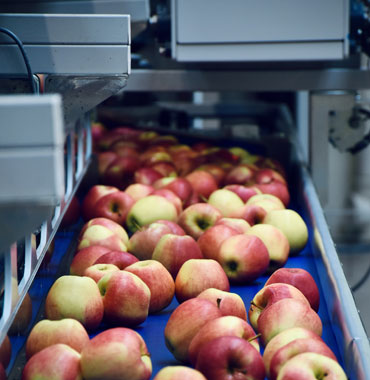The modern food supply chain must function efficiently to get people the goods they need while keeping them safe. Preventing long-term outages leading to empty grocery store shelves worldwide is vital. Industry professionals often debate the best methods to improve food logistics and make companies more resilient against supply chain shocks. Here are some of the leading options.
Digital Twins Support Food Logistics Planning
Digital twins are computerized representations of physical objects. They can help retailers, supply chain managers and other stakeholders identify culprits of spoilage and remove much of the guesswork from shifting consumer behavior. Digital twins are also valuable for helping food supply chain partners spot bottlenecks and predict the impacts of process changes before implementing them.
Consumers are notoriously fickle about their food preferences, which makes inventory control challenging. Today, companies are using digital twins to analyze and predict human behavior, allowing them to track trends and respond accordingly. Digital twins can assist with prototyping new food varieties or similar product debuts and provide insight into how consumers will likely respond to those offerings.
Another way digital twins are improving food logistics is by helping decision-makers determine what kind of packaging will allow products to travel with minimal risk of damage. Leaders must engage in a careful balancing act to locate options that meet all minimum requirements, which means finding packages that are lightweight yet sturdy or extra-resistant to crushing.
Earlier this month, researchers from the Swiss Federal Laboratories for Materials Science and Technology (EMPA) published the outcomes of a study that used a digital twin to reduce citrus fruit waste. The team tracked temperature changes in 47 containers of citrus fruits throughout the transport cycle. They then used the associated data to create computerized simulations that helped determine the likelihood of the fruits becoming unsellable during transit. The digital twins analyzed factors such as mold, moisture loss and damage from the cold.
The team confirmed that 50% of the shipments traveled in suboptimal conditions. At the end of 30 days, some of the fruits had a shelf life of only a few days. The team believes that companies will soon be able to integrate digital twin (aka virtual fruit) data along their production and supply chains to optimize storage conditions and reduce food losses.
Smart Sensors Improve Food Logistics With Better Visibility
Logistics professionals who handle consumables are turning to Internet of Things (IoT) sensors that help them understand and verify what’s happening along the supply chain at any time. For example, companies in the industrial food space often have on-site commercial thawing systems to defrost food previously frozen to prevent waste and bacterial growth. Careful monitoring and tight controls stop bacteria from proliferating as the product warms.
One of the primary benefits of IoT sensors is that they can give factory managers real-time alerts of abnormal conditions associated with thawing systems, freezers, refrigerators or other essential equipment supporting food logistics. Companies can then act faster, preventing catastrophic failures that could harm the bottom line and make consumers sick.
IoT sensors can also send time-stamped alerts of when products leave specific areas. Those details can assure supply chain managers that items are moving as they should and alert them to any potential delays. The sensors also record data to indicate if fragile items received rough handling or temperature-sensitive goods are at risk of spoilage due to subpar storage.
Sensors may even help once food reaches supermarkets and restaurants. In 2020, researchers at MIT developed Velcro-like microneedle sensors that pierce packaging and change color to indicate spoilage or bacteria. The research team believes their innovation can help prevent foodborne illness outbreaks and reduce food waste by allowing consumers to check their food before discarding items that are still OK to eat.
Data Analysis Streamlines Inventory and Tracks Emissions
Industry professionals increasingly use data analytics platforms to improve food logistics. Many of those solutions help decision-makers choose the best ways to implement automation supply chain planning or other business enhancements. One study of consumer packaged goods (CPG) companies revealed that autonomous tools for planning could cut supply chain costs by up to 10%, raise revenue by up to 4% and reduce inventory by up to 20%, while still meeting customer needs.
In addition to reducing costs and streamlining inventory control, logistics professionals are also looking to data analytics to improve sustainability and reduce environmental pollution.
The Enhancing Agri-Food Transparent Sustainability (EATS) project at the University of Aberdeen views data analytics and artificial intelligence as a powerful combination to help reduce emissions in the food-and-beverage supply chain. EATS is bringing together researchers, businesses and industry stakeholders across the UK to gather data that will be used to build a digital sustainability platform. The platform will allow industry stakeholders to see the level of emissions created by food and drink items throughout their production. The team hopes that this will allow them to identify where improvements in processes could be made to lower emissions. The platform will also include tools to encourage changes in practice.
Data Mapping Shows the Value of Strong Local Supply Chains
Food supply chains that mimic the structures of diverse ecosystems are more likely to withstand so-called “black swan” events and experience less-intensive disruptions, according to a study from researchers at Northern Arizona University and Penn State. Using a history of food flow data from U.S. cities, the researchers examined historical connections between supply chain resilience and localized diversity. They found that the diversity of a city’s supply chain explains more than 90% of the intensity, duration and frequency of significant disruptions. Another meaningful takeaway was that the researchers’ model functioned as expected regardless of what caused the supply chain shock.
These examples show just some of the many ways food and beverage industry professionals can use technology to improve logistics. However, there is no universally “best” strategy. Instead, companies interested in making improvements should take the time to identify their organizations’ most pressing pain points and research the most appropriate options. This type of personalized approach is most likely to deliver impactful results.








